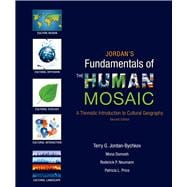
Note: Supplemental materials are not guaranteed with Rental or Used book purchases.
Purchase Benefits
What is included with this book?
Patricia L. Price is associate professor of geography at Florida International University. She earned her Ph.D. at the University of Washington. Connecting the long-standing theme of humanistic scholarship in geography to more recent critical approaches best describes her ongoing intellectual project. From her initial field research in Mexico, she has extended her focus to the border between Mexico and the United States and, most recently, to south Florida as a borderland of sorts. Recent field research is on comparative ethnic neighborhoods, conducted with colleagues and graduate students in Phoenix, Chicago, and Miami, and funded by the National Science Foundation. She is using this work to discuss the Latinos/as, neighborhood change, civic engagement, immigrant and exile landscapes, and critical geographies of race. Price is the author of Dry Place: Landscapes of Belonging and Exclusion (2004) and coeditor (with Tim Oakes) of The Cultural Geography Reader (2008).
The New copy of this book will include any supplemental materials advertised. Please check the title of the book to determine if it should include any access cards, study guides, lab manuals, CDs, etc.
The Used, Rental and eBook copies of this book are not guaranteed to include any supplemental materials. Typically, only the book itself is included. This is true even if the title states it includes any access cards, study guides, lab manuals, CDs, etc.